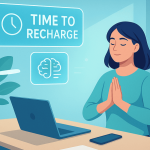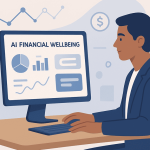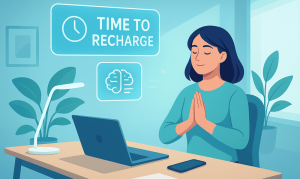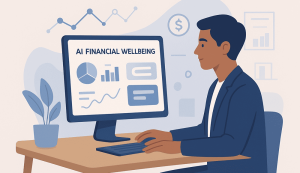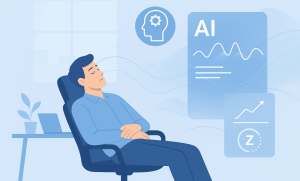Quality rest is no longer a wellness perk. It is a direct performance driver for any modern workplace. As teams operate across time zones, remote environments, and fast-moving schedules, the strain on employee sleep is more visible than ever. Business owners repeatedly observe the same pattern: tired employees make more mistakes, struggle with decision-making, and burn out faster.
This is where AI sleep recovery enters the picture. With new workplace wellbeing technologies, organizations can understand sleep behavior, predict risks, and support healthier routines through data-backed guidance.
This article explores how companies can use AI for better sleep outcomes, lift workforce alertness, and reduce fatigue across the board.
Why Sleep Matters More in Today’s Workplace
Sleep deprivation is not just a personal wellness issue. It is a real business liability. According to the CDC, insufficient sleep costs US employers more than $136 billion annually due to low productivity, errors, and absenteeism.
When employees experience recurring sleep debt, it affects:
- Reaction time
- Memory retention
- Stress tolerance
- Emotional regulation
- Creativity and problem-solving
With remote work and digital overload becoming standard, many employees report irregular sleep schedules and difficulty switching off from screens — issues that smart wellbeing AI tools can now measure and address.
Understanding AI Sleep Recovery
AI sleep recovery uses machine learning and behavioral data to observe sleep habits, recognize disruptions, and guide users toward improved rest cycles. Unlike generic sleep advice, AI-driven systems personalize recommendations based on real patterns rather than assumptions.
Key components include:
- Predictive sleep scoring
- Circadian rhythm mapping
- Environmental factor detection (light, noise, screen exposure)
- Behavior-based AI for coaching
- Integration with wearables
For companies, this translates to practical insights on employee rest optimization and new ways to support staff with science-backed interventions.
How AI Helps Employees Sleep Better

1. Personalized Sleep Guidance
Employees often know they are tired; they just do not know why. AI systems track sleep stages, identify interruptions, and deliver targeted suggestions.
Examples include:
- Adjusting screen time before bed
- Recommending recovery periods after long shifts
- Aligning work schedules with natural circadian tendencies
Such personalized support matters even more for teams such as AI for shift workers, who operate on irregular hours.
2. Digital Sleep Tracking Made Useful
Digital tools have been around for years, but AI adds value by interpreting data rather than simply presenting it. Modern systems combine digital sleep tracking with behavioral context, helping users understand how work habits, stress, or environmental exposure affect recovery.
Benefits include:
- Clear explanations of sleep deficits
- Daily sleep-quality summaries
- Simple trend dashboards
- Action prompts that fit into a workday
This turns passive data into meaningful insights employees can use.
3. Workplace Fatigue Solutions at Scale
AI allows companies to detect fatigue risks before they become incidents. This matters in sectors like call centers, logistics, healthcare, and manufacturing, where tired employees face safety and accuracy challenges.
AI-based workplace fatigue solutions can:
- Flag unusual sleep-loss patterns
- Recommend shift adjustments
- Identify tasks that require high alertness
- Reduce human errors
In call-heavy sectors, this integrates well with solutions already used for AI for call centers.
4. Tracking Sleep Patterns Over Time
Long-term AI sleep patterns monitoring helps leadership teams understand emerging trends across departments. For example, a sudden rise in poor sleep scores may signal workload stress, leadership gaps, or operational inefficiencies.
AI tools can reveal:
- Seasonal dips in sleep quality
- Stress-triggered disruptions
- Overuse of screen time
- The connection between team workload and rest
Over time, this helps companies build policies that prevent burnout rather than reacting to it.
How Better Sleep Supports Company Performance
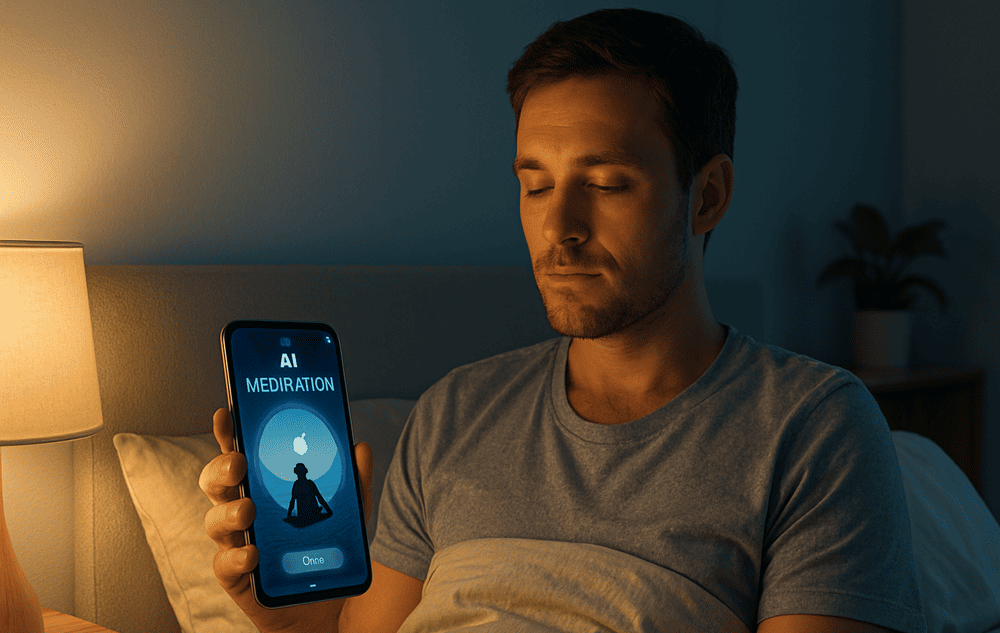
Improved Productivity
Employees who sleep well demonstrate sharper cognitive performance and faster task execution. This creates dependable output across the organization.
Fewer Errors and Safety Incidents
In high‑stakes work settings, alertness directly influences accuracy. Quality sleep restores focus and reduces the risk of operational mistakes.
Higher Team Morale and Engagement
Teams that feel well-rested show greater motivation, better communication, and a healthier attitude toward workload challenges.
Reduced Stress and Emotional Burnout
AI-based rest coaching often works alongside AI stress reduction strategies, helping employees regulate emotional highs and lows more effectively.
Industry-Specific Use Cases
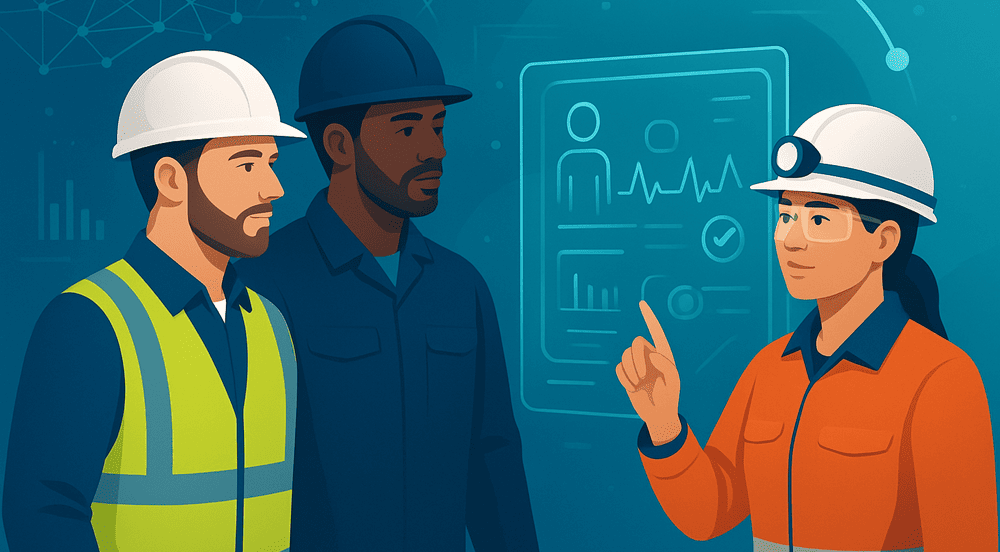
Call Centers
High-volume communication roles suffer from mental fatigue. AI can suggest rest windows and micro-breaks, improving customer satisfaction scores.
Hospitality & Retail
These sectors are driven by shift work. AI helps staff maintain consistent rest even when schedules fluctuate.
Healthcare
Clinicians working late hours benefit from personalized fatigue alerts and sleep‑restoration recommendations.
Tech & Remote Teams
Screen-heavy environments contribute to irregular sleep. AI helps teams manage exposure and develop healthier digital boundaries.
Complementary AI Tools That Support Better Sleep
Sleep recovery rarely works alone. Employees often need a combined approach.
- AI meditation tools help settle the mind before sleep.
- AI for depression prevention supports individuals experiencing mood disruptions that affect rest.
- Guided relaxation content integrates well with broader workplace wellbeing systems.
This comprehensive approach ensures employees receive help that matches their needs.
How Leaders Can Implement AI for Better Sleep
Below is a simple framework business owners can use to integrate sleep-focused AI systems:
Step 1: Assess Workplace Needs
Identify teams at risk of fatigue — shift staff, call center workers, or teams with high project load.
Step 2: Select Suitable Tools
Choose solutions that combine AI for better sleep with coaching, tracking, and predictive insights.
Step 3: Communicate the Purpose
Employees should understand the goal is wellbeing, not surveillance. Clear messaging improves adoption.
Step 4: Monitor Results
Use anonymous trend analytics to track improvements in rest, productivity, and engagement.
Step 5: Encourage Routine Building
Promote boundaries around screen time, workload distribution, and daily rest practices.
Sample Sleep Risk Factors to Monitor
| Risk Factor | Why It Matters | What AI Can Do |
| Irregular bedtimes | Disrupts circadian rhythm | Recommend stable routines |
| Excessive screen exposure | Reduces melatonin | Suggest cutoff times |
| High work stress | Affects sleep onset | Flag stress patterns |
| Long commute | Cuts into rest | Recommend schedule adjustments |
| Shift rotations | Breaks natural sleep cycles | Personalized shift guidance |
A Realistic Example
A mid-sized customer support company noticed rising error rates during early morning hours. After integrating an AI sleep recovery system, leaders learned that many employees were experiencing significant sleep debt.
The company used predictive analytics to adjust schedules, introduce recovery breaks, and provide personalized guidance. Within eight weeks, error frequency dropped by 21%, and customer satisfaction scores improved.
This simple shift in sleep awareness produced measurable operational improvements.
Final Thoughts: Why Business Owners Should Act Now
Better sleep is not a soft wellness initiative — it is a business advantage. AI sleep recovery offers a practical and measurable way to help employees regain balance, sharpen focus, and deliver stronger performance.
With mounting pressure on teams, leaders who take sleep seriously will see improvements in productivity, morale, and long-term retention. By integrating sleep‑focused AI tools with broader wellbeing initiatives such as AI for shift workers, AI meditation, and emotional health support, companies can build workplaces where people feel alert, supported, and ready to perform.
A well‑rested workforce is a more resilient workforce. AI provides the bridge to make that possible at scale.


